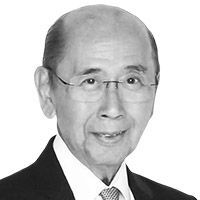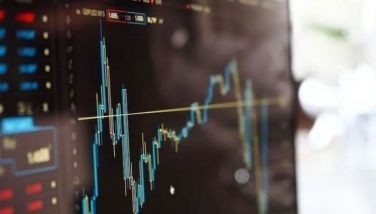COVID-19 vaccine readiness

Like Donald Trump, the Philippines cannot wait too long for the COVID-19 vaccine to be available to ensure survival. The economy is in the throes of its worst economic slump and is forecast by the World Bank to recover much slower than our Asian peers even under ideal conditions. The Treasury is nearly empty that it has forced the government to hike its borrowings to record levels. It has even got President Duterte to consider selling our iconic properties in Tokyo. I hope reason prevails that this rash and irretrievable action should not be carried out. Those properties have far more priceless symbolic and practical value to the country than the amount it will fetch from outright sale. Cabinet officials have previously said that there is adequate funding available without the need to sell state assets.
Since the cycle of alternating lockdowns and liftings have not effectively curbed the disease while wreaking havoc on the economy, we – the President himself admits - are left depending on the availability of an effective and safe vaccine to bring the country back to normalcy. Conversely, lack thereof or its slow deployment will prolong the economic malaise.
The challenge for our government, therefore, is two-fold: Secure access to sufficient vaccine supply and deploy it as expeditiously as possible. It sounds simple until you consider the magnitude involved. To attain herd immunity – the point at which transmission of the infection stops – at least 60 percent (some say 70 percent) of the population must be vaccinated. That means at least 60 million doses. Where do we get those supply and can we afford them? Is there a plan in place to acquire the supply needed, and then to bring them to the point where the injections are administered? Do we have the infrastructure and logistics capability for deployment?
Vaccine supply access
There are currently three options for securing access to the vaccine. One is through participating in the COVID-19 Vaccine Global Access Facility (COVAX Facility). The second is through bilateral government to government arrangements. The third is commercial procurement either through advance purchase agreements with manufacturers or buying in the open market. In all options, the government is the key actor and decision maker.
The COVAX Facility offers the best option of acquiring vaccines from a large portfolio of COVID-19 candidate vaccine (at least 10 manufacturers in six different countries and nine others under negotiations) at subsidized prices. This means that, even if separate bilateral deals with vaccine manufacturers exist, through the facility countries stand a far better chance of getting access to the vaccines that prove to be most effective.
The Philippines is one of 98 low and middle-income countries participating in the facility which is a collaboration of the WHO, Gavi, UNICEF, CEPI, PAHO, World Bank, and the Bill and Melinda Gates Foundation among others. It aims to procure initially enough vaccines for 20 percent of the population of the participants. In the case of the Philippines, that would translate to 20 million doses.
The Philippines is in talks for bilateral supply agreements with China and Russia. The downside is that they will place priority on their own people and it has not yet been shown whether the vaccines they are developing will be safe and effective beyond a shadow of a doubt.
The third option will be the most expensive and will require self-financing. Advance purchase agreements will be relatively cheaper, but it will also involve betting on a particular manufacturer’s success in developing the vaccine. Buying in the open market for proven vaccines will be expensive and we will have to queue up to get them. DOH said they are negotiating with some of the manufacturers in the final phase of clinical trials.
Deployment: Where are we?
How much will it cost to acquire the vaccine? Recent estimates of prices of US-made COVID-19 vaccines range from $4 to $20 per dose for federally procured supplies from companies that had been subsidized to $35 to $40 for others. Those from the COVAX Facility can be purchased at subsidized prices ranging reportedly from $3 (from an Indian pharmaceutical) to $7 per dose. Sources from DOH say they have contracts for P350 per dose, presumably from the facility, for 20 million doses.
Finance Secretary Carlos Dominguez III says the Philippines plans to procure 40 million doses – estimated to cost P20 billion. That’s an average of P500 per dose, which is probably on the low side. Another variable also is that at this point in time, it is as yet unknown whether the vaccine will provide lifetime immunity or only for a specific period of time and whether they have to be administered in one or two doses. It is also not determined whether this would be provided free or under Philhealth coverage (good luck with that). Initial dose allocations will be given to health and social workers, followed by subsequent tranches of vaccine doses for sectors of our populations at higher risk of critical COVID-19 disease. I would suggest that our seafarers, who are critical to the global supply chain, be included in the priority list.
Herd immunity is said to be achieved if 60 million are vaccinated, so we will need another 20 million to reach that threshold. Ideally, of course, it should be the entire population – as the maxim says “no one is safe unless everyone is safe” – so 60 million more. Who will acquire and pay for this?
The aforementioned expenditure is only for the vaccine itself. That estimate does not include the necessary infrastructure for temperature controlled warehousing and the logistics, of distribution from customs to the final point of service, i.e. injection. Allocations have to be made for syringes and needles. Ditto for the hard and soft infrastructure of cold chain logistics including warehouses, refrigerated trucks, cooling boxes with corresponding dry ice – whether outsourced or government owned. There would be the salaries and training costs of those who will handle and administer the vaccine. Robust digital technology must be utilized to keep track of each individual dose from arrival to injection. Smooth border FILIPINO WORLDVIEW... From B3
processes will need to be in place to ensure timely regulatory approvals, adequate security measures, appropriate handling and customs clearance.
Health Secretary Duque announced that the DOH will provide a detailed roadmap for the procurement of the successful vaccine. He said that once a viable vaccine for procurement is identified, the Department will provide “a detailed roadmap for its procurement and rollout. Details of which would include its budget, financing scheme, pricing schemes, interim reimbursements of vaccines, clinical trial insurance for side effects, participation fees for volunteers to the testing, and other specific guidelines”. That announcement came out in the papers September 11. I am afraid that may be a little too late especially since an assessment of the cold chain logistics requirement has not yet been undertaken so that the necessary investments can be made to meet the requirements to scale up from initially 20 million doses but eventually for 100 million doses, although these will be delivered on a staggered basis.
Government will have to roll up its sleeves to meet this mammoth challenge. And it would be better if it does this in collaboration with the private sector, civil society and LGUs.
- Latest
- Trending


























